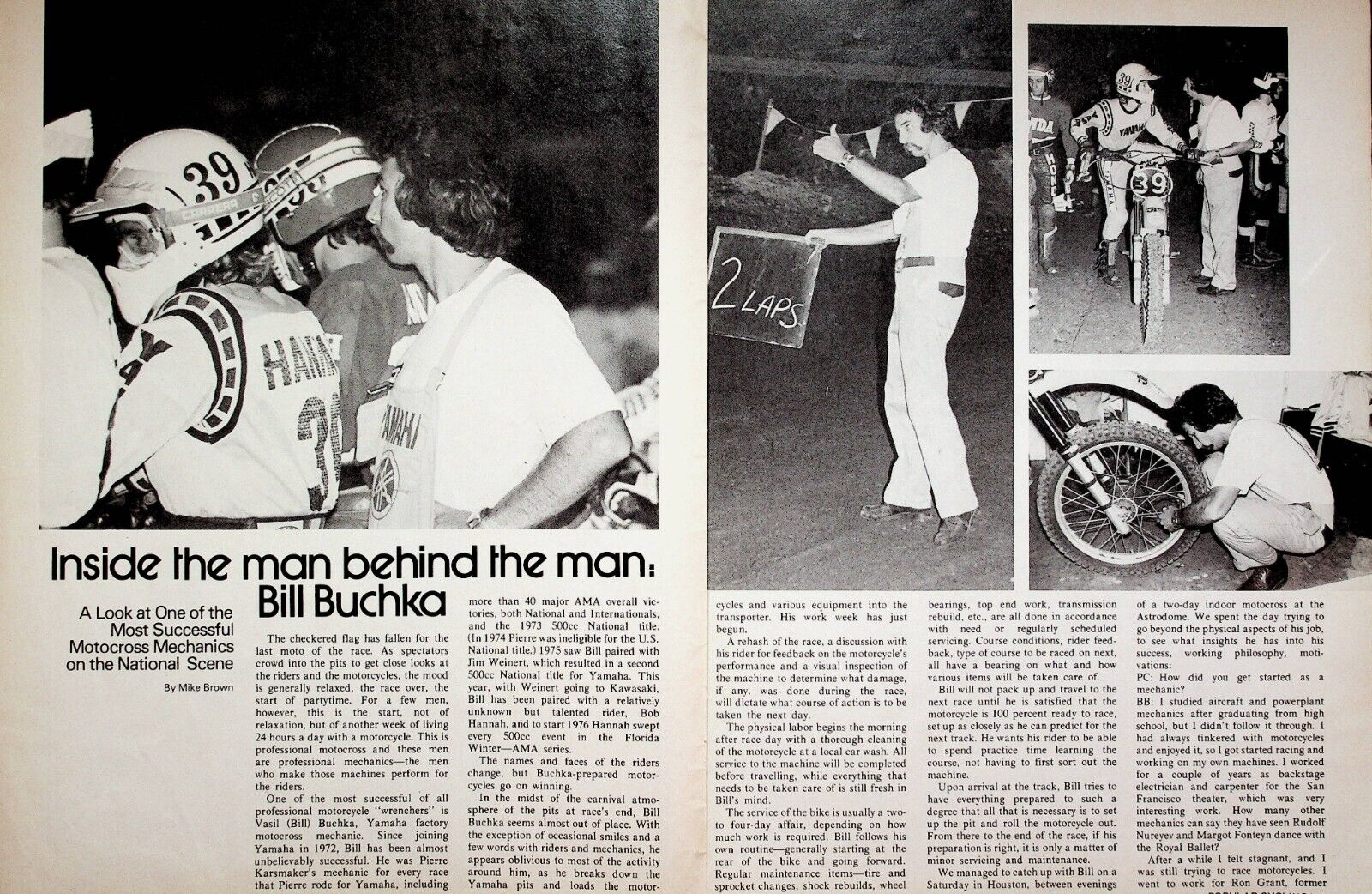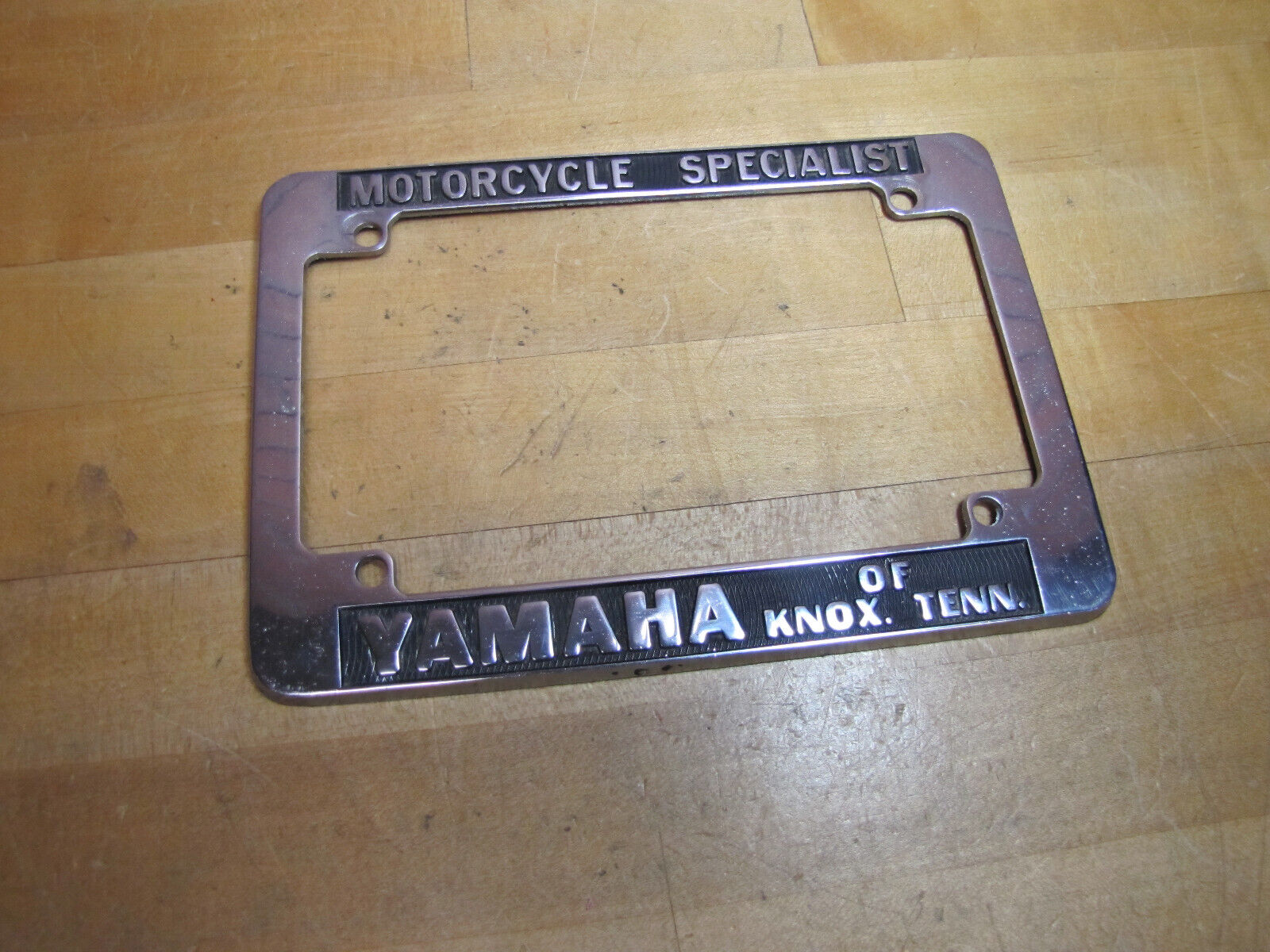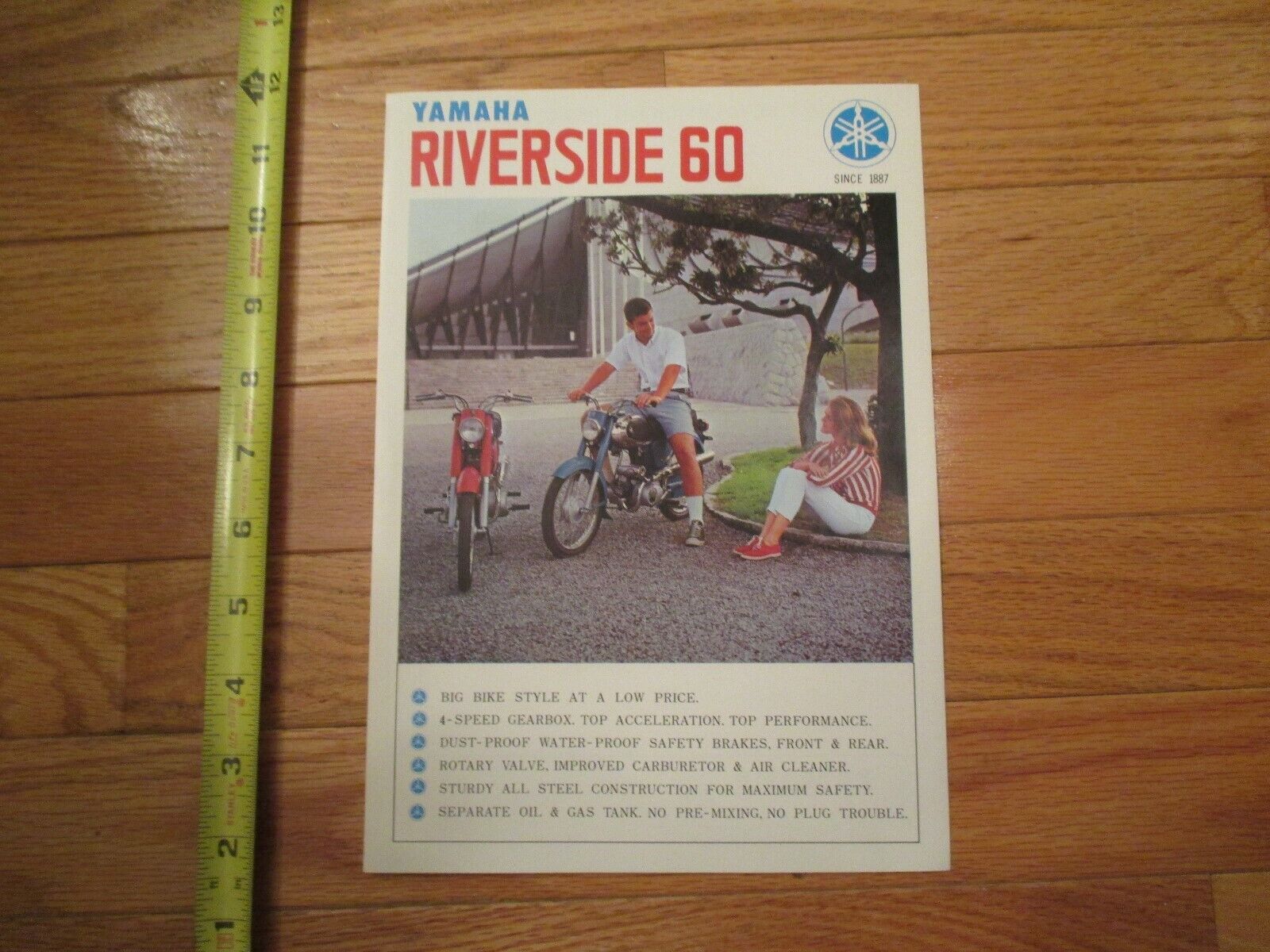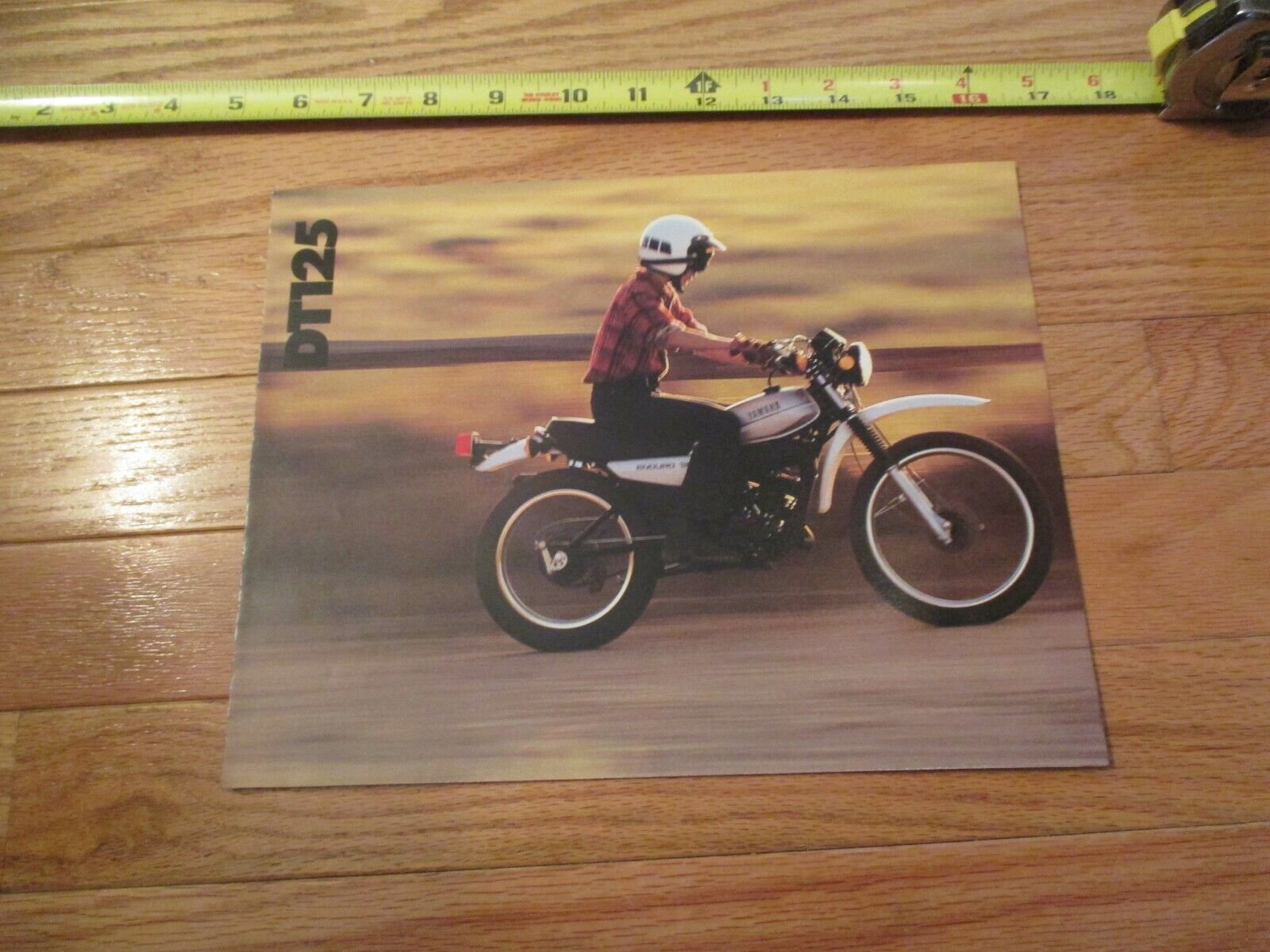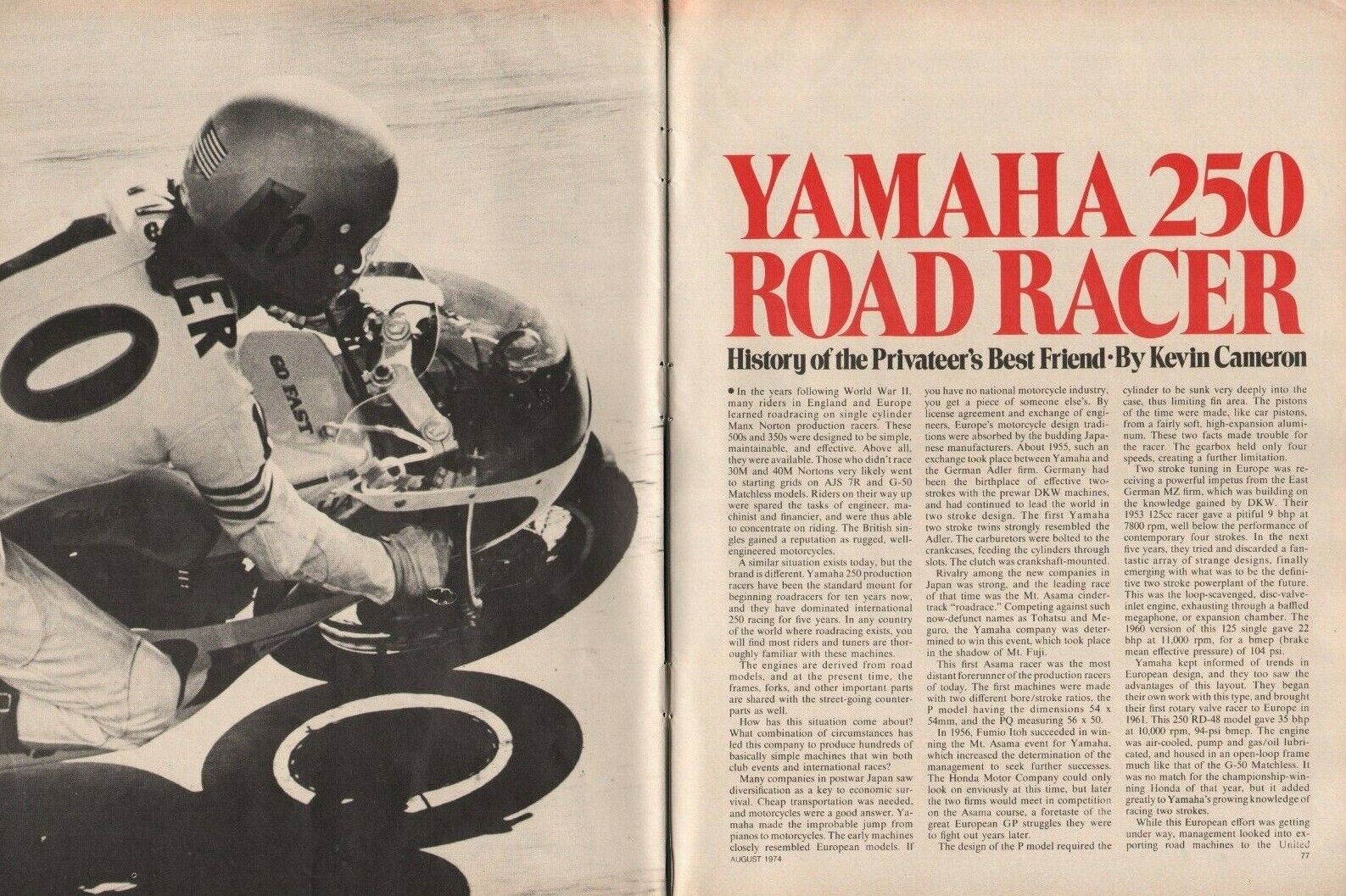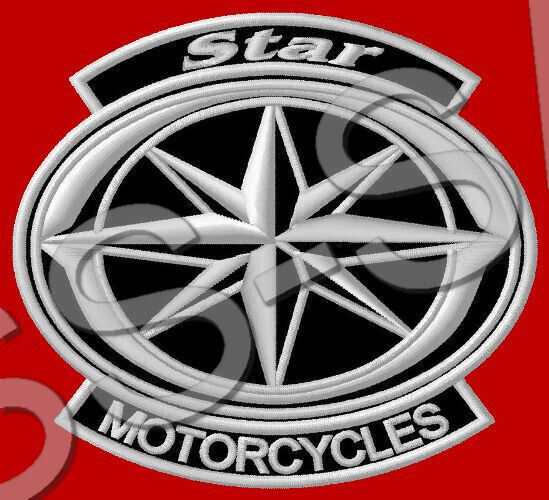-40%
1976 Bill Buchka Yamaha Motocross Mechanic - 4-Page Vintage Motorcycle Article
$ 7.59
- Description
- Size Guide
Description
1976 Bill Buchka Yamaha Motocross Mechanic - 4-Page Vintage Motorcycle ArticleOriginal, vintage magazine article
Page Size: Approx. 8" x 11" (21 cm x 28 cm) each page
Condition: Good
Inside the man behind the man
A Look at One of the
Most Successful
Motocross Mechanics
on the National Scene
By Mike Brown
Bill Buchka
The checkered flag has fallen for the
last moto of the race. As spectators
crowd into the pits to get close looks at
the riders and the motorcycles, the mood
is generally relaxed, the race over, the
start of partytime. For a few men,
however, this is the start, not of
relaxation, but of another week of living
24 hours a day with a motorcycle. This is
professional motocross and these men
are professional mechanics—the men
who make those machines perform for
the riders.
One of the most successful of all
professional motorcycle “wrenchers” is
Vasil (Bill) Buchka, Yamaha factory
motocross mechanic. Since joining
Yamaha in 1972, Bill has been almost
unbelievably successful. He was Pierre
Karsmaker’s mechanic for every race
that Pierre rode for Yamaha, including
more than 40 major AMA overall vic-
tories, both National and Internationals,
and the 1973 500cc National title.
(In 1974 Pierre was ineligible for the U.S.
National title.) 1975 saw Bill paired with
Jim Weinert, which resulted in a second
500cc National title for Yamaha. This
year, with Weinert going to Kawasaki,
Bill has been paired with a relatively
unknown but talented rider, Bob
Hannah, and to start 1976 Hannah swept
every 500cc event in the Florida
Winter—AMA series.
The names and faces of the riders
change, but Buchka-prepared motor-
cycles go on winning.
In the midst of the carnival atmo-
sphere of the pits at race’s end, Bill
Buchka seems almost out of place. With
the exception of occasional smiles and a
few words with riders and mechanics, he
appears oblivious to most of the activity
around him, as he breaks down the
Yamaha pits and loads the motor-
cycles and various equipment into the
transporter. His work week has just
begun.
A rehash of the race, a discussion with
his rider for feedback on the motorcycle’s
performance and a visual inspection of
the machine to determine what damage,
if any, was done during the race,
will dictate what course of action is to be
taken the next day.
The physical labor begins the morning
after race day with a thorough cleaning
of the motorcycle at a local car wash. All
service to the machine will be completed
before travelling, while everything that
needs to be taken care of is still fresh in
Bill’s mind.
The service of the bike is usually a two-
to four-day affair, depending on how
much work is required. Bill follows his
own routine—generally starting at the
rear of the bike and going forward.
Regular maintenance items—tire and
sprocket changes, shock rebuilds, wheel
bearings, top end work, transmission
rebuild, etc., are all done in accordance
with need or regularly scheduled
servicing. Course conditions, rider feed-
back, type of course to be raced on next,
all have a bearing on what and how
various items will be taken care of.
Bill will not pack up and travel to the
next race until he is satisfied that the
motorcycle is 100 percent ready to race,
set up as closely as he can predict for the
next track. He wants his rider to be able
to spend practice time learning the
course, not having to first sort out the
machine.
Upon arrival at the track, Bill tries to
have everything prepared to such a
degree that all that is necessary is to set
up the pit and roll the motorcycle out.
From there to the end of the race, if his
preparation is right, it is only a matter of
minor servicing and maintenance.
We managed to catch up with Bill on a
Saturday in Houston, between evenings
of a two-day indoor motocross at the
Astrodome. We spent the day trying to
go beyond the physical aspects of his job,
to see what insights he has into his
success, working philosophy, moti-
vations:
PC: How did you get started as a
mechanic?
BB: I studied aircraft and powerplant
mechanics after graduating from high
school, but I didn’t follow it through. I
had always tinkered with motorcycles
and enjoyed it, so I got started racing and
working on my own machines. I worked
for a couple of years as backstage
electrician and carpenter for the San
Francisco theater, which was very
interesting work. How many other
mechanics can say they have seen Rudolf
Nureyev and Margot Fonteyn dance with
the Royal Ballet?
After a while I felt stagnant, and I
was still trying to race motorcycles. I
went to work for Ron Grant, former
15189-AL-7607-01
